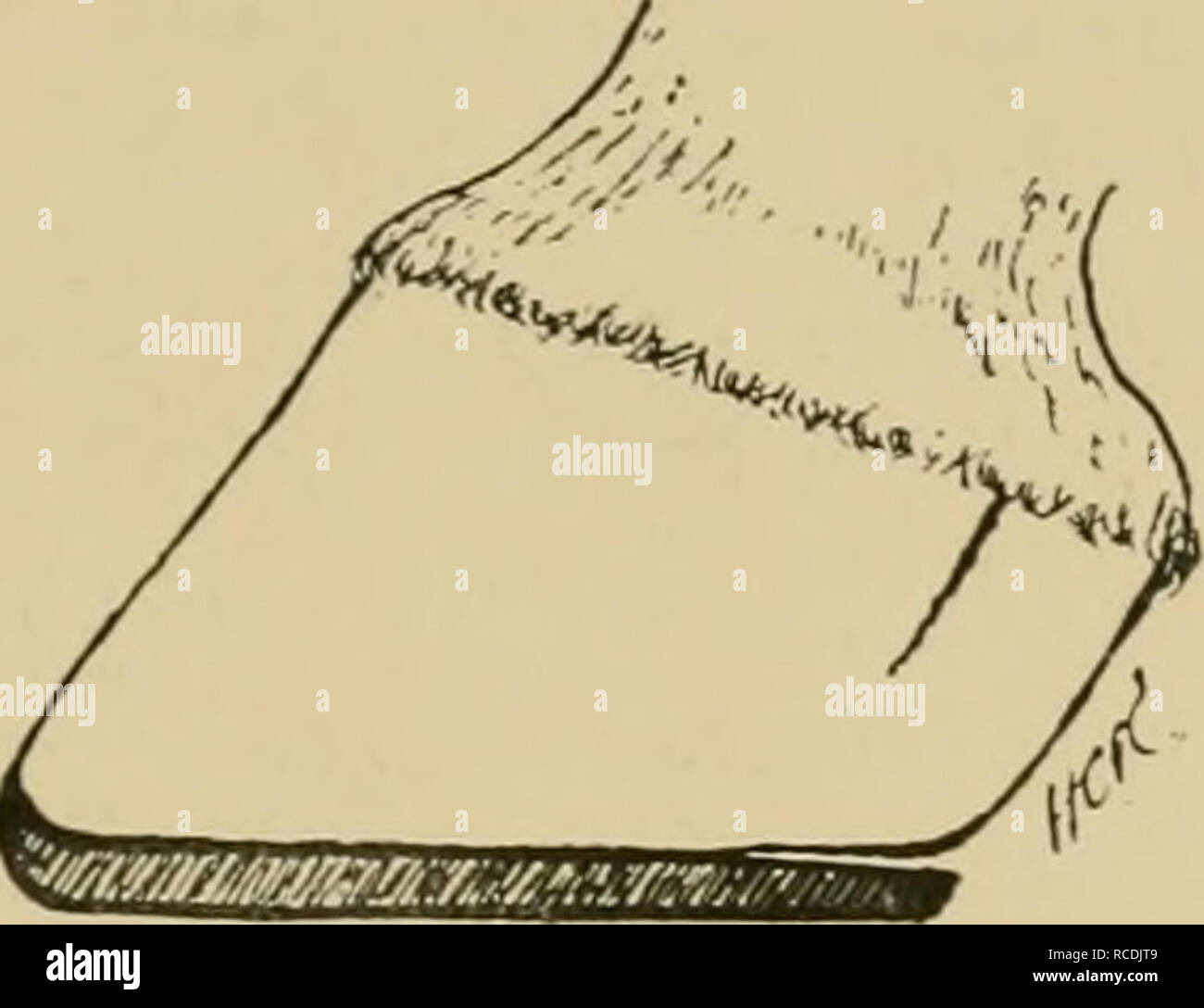. Diseases of the horse's foot. Hoofs; Horses. DISEASES FKOM FAULTY CONFOEMATION 177 shoe. In this connection it is necessary to point out that on no account should ' springing ' of the heels of the shoe be allowed. Fig. 93 illustrates the ill-practice. In this case, when the entire weight is thrown on to the heels, the portion of wall posterior to the crack is bound to participate unduly in the downward movement, and so tend to widening of the crack at its highest point. We have already referred to the matter of ' clips.' In no case, whether the crack be at the toe or in the quarters, should

Image details
Contributor:
Paul Fearn / Alamy Stock PhotoImage ID:
RCDJT9File size:
7.1 MB (135.6 KB Compressed download)Releases:
Model - no | Property - noDo I need a release?Dimensions:
1804 x 1385 px | 30.5 x 23.5 cm | 12 x 9.2 inches | 150dpiMore information:
This image is a public domain image, which means either that copyright has expired in the image or the copyright holder has waived their copyright. Alamy charges you a fee for access to the high resolution copy of the image.
This image could have imperfections as it’s either historical or reportage.
. Diseases of the horse's foot. Hoofs; Horses. DISEASES FKOM FAULTY CONFOEMATION 177 shoe. In this connection it is necessary to point out that on no account should ' springing ' of the heels of the shoe be allowed. Fig. 93 illustrates the ill-practice. In this case, when the entire weight is thrown on to the heels, the portion of wall posterior to the crack is bound to participate unduly in the downward movement, and so tend to widening of the crack at its highest point. We have already referred to the matter of ' clips.' In no case, whether the crack be at the toe or in the quarters, should a clip be placed immediately below it. If the crack is at the toe, the usual clip should be dispensed with, and a clip at each side made to take its place. At the same time care should be taken to avoid throwing the weight far. Fig. 93.—The Bearing ' eased ' by ' springing ' the Heel of THE Shoe. forward. For that reason a shoe with calkins or with very high heels should be removed, and a shoe with an ordinary flat web substituted. In the case of quarter-crack, where the constant move- ment of the parts under expansion and contraction of the foot makes itself most felt, it is wise to apply a shoe with clips fitting moderately tight against the inside of the bars. By this means movement will to a very large extent be curtailed. Where a marked tendency to contraction is found, as is often the case with quarter-crack, then the shoe with the clips may be rendered more marked in its operation by giving to the outer face of each clip—that face applied to the bar—a slope from above downwards and outwards. In other words, a slipper shoe should be applied and the 1-2. Please note that these images are extracted from scanned page images that may have been digitally enhanced for readability - coloration and appearance of these illustrations may not perfectly resemble the original work.. Reeks, H. Caulton. London : Bailière, Tindall etc.